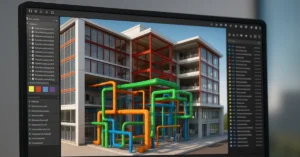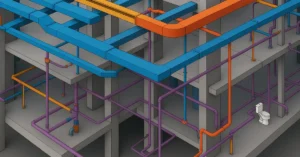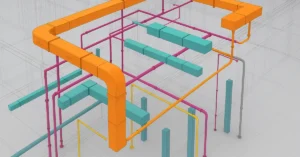Explore the Most Overlooked Yet Striking Brutalist Buildings in Lyon
In the heart of France lies Lyon, a city best known for its Renaissance architecture, gastronomic wonders, and UNESCO World Heritage sites. However, beyond the old town’s charming facades and Roman amphitheaters, there exists a lesser-explored architectural narrative: the concrete-heavy, bold, and unapologetic world of Brutalism. The brutalist buildings in Lyon form a striking juxtaposition to its otherwise historic charm, offering an eye-opening journey for lovers of modernist and post-war architecture.
What is Brutalism and Why Does It Matter in Lyon?
Brutalism, derived from the French term béton brut (raw concrete), is a post-World War II architectural style known for its massive forms, raw surfaces, and unpretentious honesty. Emerging in the 1950s and 60s, it became a practical and aesthetic response to the needs of urban renewal and rapid reconstruction in Europe.
In Lyon, Brutalism found its place amid the city’s growth and modern development. These structures, often civic or residential, are scattered across districts that underwent significant urban transformation in the mid-20th century. Though not always celebrated, they remain essential to understanding the city’s full architectural spectrum.
Exploring the Best Brutalist Buildings in Lyon
1. La Duchère Housing Complex
Location: 9th Arrondissement
La Duchère is perhaps one of the most vivid examples of post-war urban planning in Lyon. Constructed in the 1960s as part of France’s effort to address housing shortages, this complex showcases the core principles of Brutalism: functional layout, repetitive patterns, and prominent use of exposed concrete.
Towering blocks, interlinked by wide walkways, define the landscape. While once criticized for their starkness, recent urban redevelopment has breathed new life into the area, integrating green spaces and community services while preserving its brutalist identity.
2. Crématorium de la Guillotière
Location: 228 Avenue Berthelot, 69008 Lyon
A lesser-known but highly intriguing example, the Crématorium de la Guillotière is a bold, geometric structure that commands quiet respect. Constructed in the 1970s, this building eschews ornamentation, relying on form and material to convey solemnity and permanence.
Its use of concrete in juxtaposition with minimal glazing allows light and shadow to animate its otherwise somber aesthetic. This building is an underappreciated example of Brutalism’s ability to convey profound emotion through simplicity.
3. Lyon Part-Dieu Complex
Location: 3rd Arrondissement
The Part-Dieu district is often referred to as Lyon’s business hub, and its development in the post-war period saw a surge in brutalist-style construction. Notable structures like the Tour Part-Dieu (also called “Le Crayon” due to its pencil-like shape) and nearby administrative buildings exhibit characteristics of the Brutalist style.
Though the Tour is often categorized as modernist, its base and surrounding structures lean heavily into Brutalist language—rigid forms, concrete panels, and grid-like fenestration. Walking through Part-Dieu feels like stepping into a mid-century urban utopia envisioned through raw materials.
4. Halle Tony Garnier (Reinvention)
Location: 20 Place Charles et Christophe Méric, 69007 Lyon
Originally built in 1905 by architect Tony Garnier, this structure underwent brutalist-influenced transformations in the mid-20th century. Its reinforced concrete bones, industrial proportions, and lack of decoration give it a striking brutalist appearance despite its earlier origins.
It now serves as a concert and events venue, showing how Brutalism’s utilitarian roots can seamlessly adapt to cultural and artistic spaces. This blend of eras adds a unique dimension to Lyon’s architectural story.
5. Bron Parilly Hospital Buildings
Location: Bron suburb, eastern Lyon
In the suburbs of Lyon, the Parilly Hospital complex represents institutional Brutalism at its core. Built during the expansion of healthcare infrastructure in the 1960s and 70s, these buildings feature monolithic facades, exposed aggregate concrete, and sprawling horizontal layouts.
The hospital’s design emphasizes utility and resilience, embracing the Brutalist belief in architecture as a tool for public service. While functional above all, the visual rhythm of its façades still offers a brutal kind of beauty to those who pause to observe.
Brutalist Urban Planning in Lyon: The Bigger Picture
Many of Lyon’s Brutalist buildings were constructed during an era of rapid urban development, particularly in response to population growth and housing demand. Areas like La Duchère and the outskirts of Vénissieux saw high-density housing projects rise quickly, guided by modernist ideals and Brutalist aesthetics.
These projects often aimed to create self-contained urban environments, complete with schools, shops, and parks. Though some faced criticism for contributing to social isolation, others have aged into beloved landmarks. Ongoing redevelopment projects have tried to preserve their architectural significance while improving functionality.
The Influence of Architects Like Tony Garnier
Though not a Brutalist himself, Lyon-native Tony Garnier greatly influenced the architectural philosophy that underpinned many post-war projects. His emphasis on industrial materials, modularity, and comprehensive urban planning laid the groundwork for future Brutalist expressions.
Today, buildings influenced by Garnier’s legacy continue to be celebrated, especially where his vision intersected with the raw, expressive tendencies of Brutalism.
Reevaluating Brutalism in Lyon
Historically, many residents and critics found Brutalism difficult to love. The raw, unfinished look and imposing scale of these structures often clashed with more traditional tastes. However, in recent years, there’s been a noticeable reevaluation.
Younger generations of architects, historians, and urban explorers have begun to appreciate the boldness and honesty of Brutalist buildings in Lyon. Instagram feeds dedicated to concrete architecture, guided walking tours, and documentaries have fueled a fresh dialogue around these misunderstood structures.
Preservation Challenges and Opportunities
Despite this growing appreciation, many brutalist buildings in Lyon remain under threat. Urban redevelopment pressures, poor maintenance, and public apathy have led to demolitions or unsympathetic renovations.
Advocates argue for preserving these buildings not just for their aesthetic or historical value but for their role in documenting post-war urban challenges and architectural experimentation. Lyon’s city planners are increasingly being called to balance modernization with preservation.
Conclusion: Why You Should See the Brutalist Buildings in Lyon
Whether you see them as concrete monstrosities or sculptural masterpieces, brutalist buildings in Lyon tell an essential part of the city’s story. They reflect a time of transformation, ambition, and utilitarian hope.
From La Duchère’s residential blocks to the solemn geometry of Crématorium de la Guillotière, these buildings challenge you to think differently about beauty, function, and heritage. In a city celebrated for its classical elegance, Brutalism adds a layer of gritty authenticity that is just as compelling.
If you’re planning a trip to Lyon, take time to wander beyond the cobblestones and baroque facades. Explore the concrete corners and unadorned lines of its Brutalist architecture. In their shadows, you might just find a new appreciation for a style that dares to be different.
If you’re interested in learning more about architecture firms in Europe, check out this comprehensive list of the top 50 firms compiled by Archgyan. From innovative startups to long-established industry leaders, this list has it all. Take a look and discover some of the most inspiring and influential architecture firms in Europe today.
If you’re interested in architecture and want to learn more about this amazing field, subscribe to our podcast on youtube
For more SketchUp tutorials, head to https://www.sketchupguru.com










